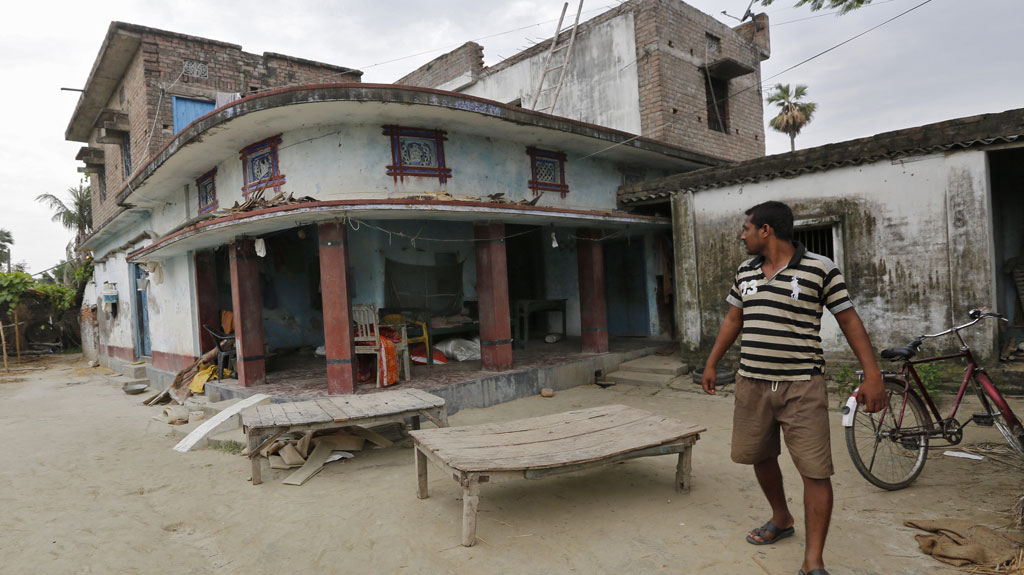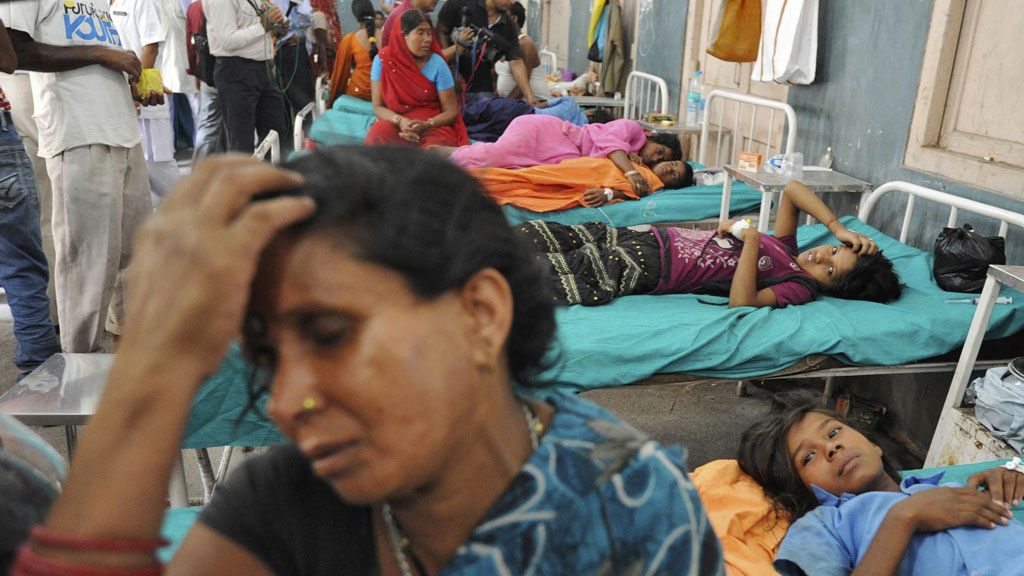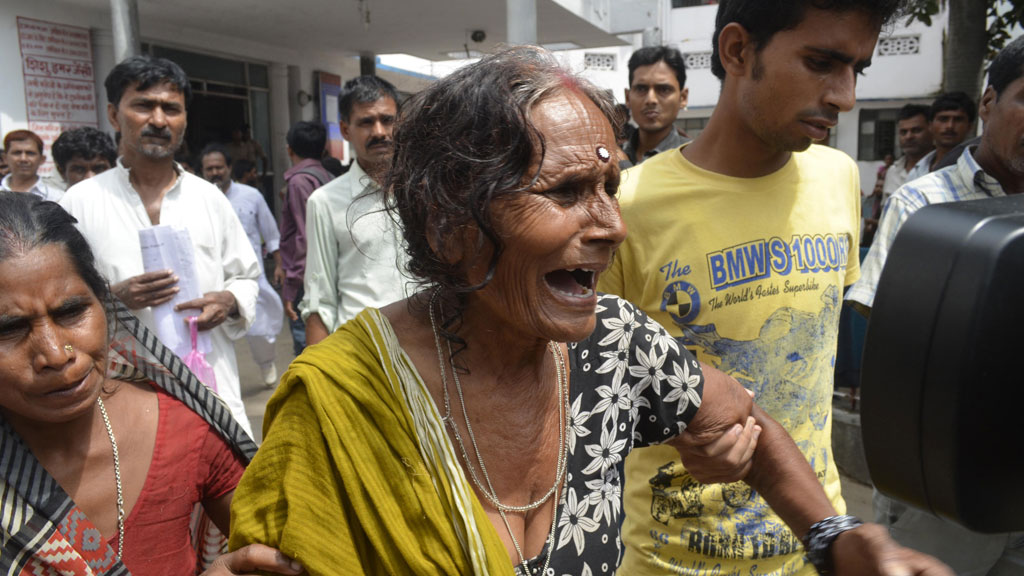Headmistress held in Indian poisoned lunches probe
The headmistress of the school where 23 children died after eating a meal laced with pesticide is arrested. The incident was one of India’s deadliest food poisoning outbreaks in years.

Meena Kumari fled as soon as the children began falling ill after eating the lunch cooked at the school in Bihar state.
Twenty-three children between the ages of 5 and 12 died after eating the meal and many others fell ill. The children became sick within minutes of eating a meal of rice and soybean-potato curry in their one-room school on 16 July, vomiting and convulsing with stomach cramps.
Many died, some on the floor of a hospital where they went for treatment, within hours of consuming the food.
Pesticides
Forensic tests showed the meal was contaminated with monocrotophos, a lethal pesticide banned in many countries.
Police have said the headmistress is key to solving the mystery of how the pesticide ended up in the food.
Bihar’s education minister, P.K. Sahi, has said Ms Kumari bought the ingredients for the meal from a shop owned by her husband, who has fled.

A woman holds her head while sitting next to her sick daughter
The school’s cooks have told authorities that the principal controlled the food for the government-provided free daily lunch.
One of the cooks said that the cooking oil appeared different than usual, but that the principal told her to use it anyway.
On Wednesday, Bihar’s chief minister and top elected official, Nitish Kumar, said the government would punish all those who were responsible for the tragedy.
“No one will be spared,” Kumar told reporters, adding that state authorities were working to streamline the school lunch program to prevent the recurrence of such a mishap.
Midday meal plan
India’s midday meal plan is one of the world’s biggest school nutrition programs.
The scheme that covers 120 million children and aims to fight malnutrition and encourage school attendance.
But it had already drawn widespread complaints over food safety.
State governments have the freedom to decide on menus and timings of the meals, depending on local conditions and availability of food rations.

A woman is consoled after her grandson died from eating the meal
It’s part of an effort to address concerns about malnutrition, which the government says nearly half of all Indian children suffer from.
It was first introduced in the 1960s in southern India, where it was seen as an incentive for poor parents to send their children to school.
Since then, the program has been replicated across the country, covering some 120 million schoolchildren.
Although there have been complaints about the quality of the food served and the lack of hygiene, the incident in Bihar appeared to be unprecedented for the massive food program.
-
Latest news
-
Laughing Boy: New play tells the tragic tale of Connor Sparrowhawk5m

-
Sewage warning system allows some of worst test results to be left off rating system, analysis shows3m

-
Post Office inquiry: Former CEO didn’t like word “bugs” to refer to faulty IT system4m

-
Israeli soldier speaks out on war in Gaza12m

-
PM’s defence spending boost should be ‘celebrated’, says former Armed Forces Minister4m

-




